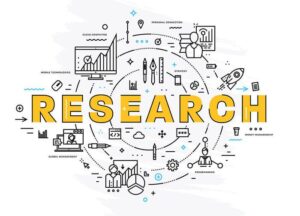
Seconds after his birth, Tommaso Citti has his vital signs checked at Beauregard Hospital in
Aosta, Italy. Children born today in prosperous countries are very likely to live into their 90s. As the
world grows significantly older, research into slowing or reversing aging becom…Show more
PHOTOGRAPH BY MELANIE WENGER
BYFRAN SMITH
PHOTOGRAPHS BYJASPER DOEST,DAVID GUTTENFELDER,NICHOLE
SOBECKI, ANDMELANIE WENGER
PUBLISHED DECEMBER 28, 2022
• 40 MIN READ
Leer en español.
Scientists are great at making mice live longer.
Rapamycin, widely prescribed to prevent organ rejection after a
transplant, increases the life expectancy of middle-age mice by as much
as 60 percent. Drugs called senolytics help geriatric mice stay sprightly
long after their peers have died. The diabetes drugs metformin and
acarbose, extreme calorie restriction, and, by one biotech investor’s
count, about 90 other interventions keep mice skittering around lab
cages well past their usual expiration date. The newest scheme is to
hack the aging process itself by reprogramming old cells to a younger
state.
“If you’re a mouse, you’re a lucky creature because there are a lot of
ways to extend your life span,” says Cynthia Kenyon, a molecular
biologist whose breakthrough work decades ago catalyzed what is now a
research frenzy. “And long-lived mice seem very happy.”
What about us? How far can scientists stretch our life span? And how
far should they go? Between 1900 and 2020, human life expectancy
more than doubled, to 73.4 years. But that remarkable gain has come at
a cost: a staggering rise in chronic and degenerative illnesses. Aging
remains the biggest risk factor for cancer, heart disease, Alzheimer’s,
type 2 diabetes, arthritis, lung disease, and just about every other major
illness. It’s hard to imagine anyone wants to live much longer if it
means more years of debility and dependence.
To understand aging, researchers look for clues in animals, such as
those studied by the 51-year-old Amboseli Baboon Research Project
(ABRP) in Kenya. As part of that work, Benard Oyath and Jackson
Warutere prepare to take blood and other samples from Olduvai, who
was tranquilized and then released back to the wild. The project’s
scientists have found that baboons with strong social connections in
adulthood can recover from harmful health effects of a stressful
childhood.
To understand aging, researchers look for clues in animals, such as those studied by the 51-year-
old Amboseli Baboon Research Project (ABRP) in Kenya. As part of that work, Benard Oyath and
Jackson Warutere prepare to take blood and other samples from Olduvai, who was …Show more
PHOTOGRAPH BY NICHOLE SOBECKI
But if those mouse experiments lead to drugs that clean up the
molecular and biochemical wreckage at the root of so many health
problems in old age, or to therapies that slow—or, better yet,
prevent—that messy buildup, then many more of us would reach our
mid-80s or 90s without the aches and ailments that can make those
years a mixed blessing. And more might reach what is believed to be the
natural maximum human life span, 120 to 125 years. Few people get
anywhere close. In industrialized nations, about one in 6,000 reaches
the century mark and one in five million makes it past 110. The record
holder, Jeanne Calment in France, died in 1997 at 122 years, 164 days.
Human biology, it seems, can be optimized for greater longevity.
Unimaginable riches await whoever cracks the code. No wonder
investors are pouring billions into trying. Google led the spending spree
with the 2013 launch of Calico Life Sciences, where Kenyon is the vice
president of aging research. Over the past few years, investment in the
industry has come from tech tycoons, overnight crypto millionaires, and
most recently Saudi royals. It seems everyone with cash to burn is
placing a bet on aging’s next—or really, its first—big thing.
This work is powered by artificial intelligence, big data, cellular
reprogramming, and an increasingly exquisite understanding of the
zillions of molecules that keep our bodies humming. Some researchers
even talk about “curing” aging.
Left: Matt Kaeberlein, 51, a pathology professor at the University of Washington, deadlifts 305
pounds in his North Bend, Washington, garage. He believes exercise is the most important way to
prevent disease and disability in old age, but like other scientists, he hopes to fin…Read More
Right: Veterinary cardiologist Ryan Baumwart performs an echocardiogram on a dog named Joe
Pup at Washington State University in Pullman as part of Kaeberlein’s study of whether rapamycin
has antiaging potential.
PHOTOGRAPHS BY DAVID GUTTENFELDER
Left: Rochelle Buffenstein, a research professor at the University of Illinois, Chicago, examines a
naked mole rat. She has spent decades studying the long-lived mammal, looking for ways to adapt
its unique traits to prevent some of the adverse effects of aging in humans.
PHOTOGRAPH BY DAVID GUTTENFELDER
Right: A yellow-winged bat rests in a biologist’s hand in Uganda. Eighteen of the 19 mammals that
live proportionally longer than humans based on body size are bats. (The naked mole rat is the
other.) Bats fascinate scientists because they carry deadly viruses but are not af…Read More
PHOTOGRAPH BY NICHOLE SOBECKI
Humans have chased dreams of eternal youth for centuries. But the
study of aging and longevity was such a scientific backwater as recently
as 30 years ago that Cynthia Kenyon had trouble recruiting young
researchers to assist her in the experiments that would break the field
open. Working then at the University of California, San Francisco, she
altered one gene in tiny roundworms known as C. elegans and doubled
their life span. The mutants acted younger, too, slithering friskily under
the microscope while their unaltered peers lay about like lumps.
(Courtesy National Geographic).




